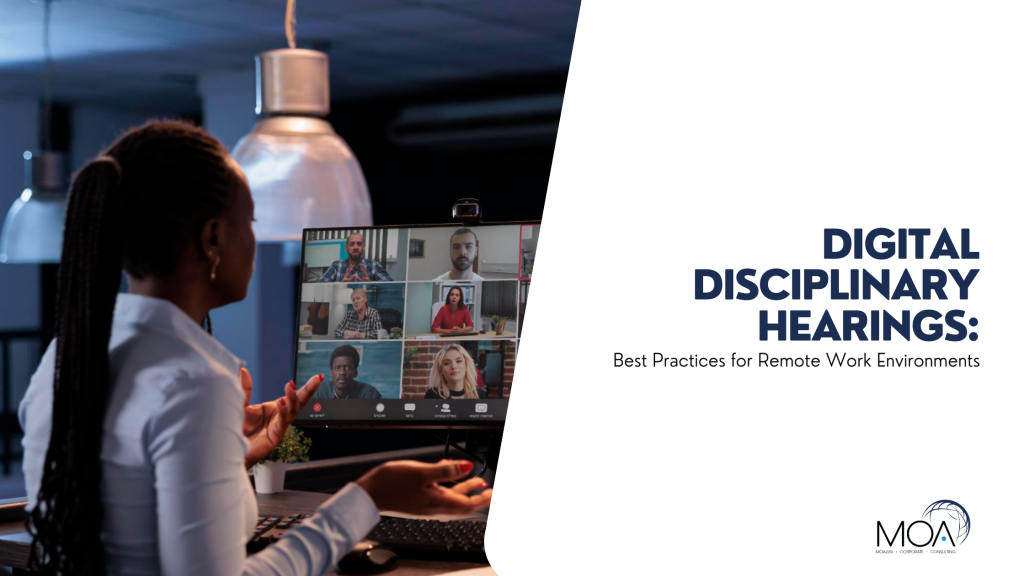In the dynamic landscape of modern workplaces, the shift towards remote work has become more prevalent than ever. As organizations adapt to the challenges posed by the digital age, one critical aspect that requires careful consideration is disciplinary hearings. In this blog post, we will explore the best practices for conducting digital disciplinary hearings in remote work environments.
1. Establish Clear Policies
In a remote work setting, it is imperative to have well-defined policies regarding conduct, performance expectations, and disciplinary procedures. Ensure that employees are aware of these policies and have easy access to them. Clearly outline the steps involved in the disciplinary process, emphasizing fairness and due process.
2. Utilize Secure and Accessible Technology:
Choose a secure and user-friendly digital platform for disciplinary hearings. Video conferencing tools, such as Zoom or Microsoft Teams, offer convenient solutions for remote hearings. Ensure that both the management and employees have access to the necessary technology and provide guidance on its usage to avoid technical difficulties during hearings.
3. Schedule Thoughtfully:
When scheduling digital disciplinary hearings, consider time zones, work hours, and potential disruptions. Aim for a time that accommodates all parties involved and allows for a focused and uninterrupted discussion. Clearly communicate the hearing schedule well in advance, providing everyone with ample time to prepare.
4. Prioritize Confidentiality and Privacy:
Uphold the confidentiality of disciplinary hearings by emphasizing the importance of private spaces during remote proceedings. Encourage participants to join the meeting from a quiet and confidential location to maintain the privacy of the discussion. Remind all involved parties of the sensitivity of the matter and the need for discretion.
5. Provide Adequate Notice and Information:
Ensure that employees are adequately informed about the disciplinary hearing, including the specific allegations and the purpose of the meeting. Offer ample notice to allow employees to prepare their defense, gather relevant documentation, and secure legal representation if necessary. Clarity and transparency are key to a fair and just process.
6. Facilitate Effective Communication:
Foster open communication during digital disciplinary hearings by establishing ground rules for respectful interaction. Encourage all participants to use video to enhance non-verbal communication, and utilize features like screen sharing to present evidence or documentation. The goal is to replicate, as much as possible, the atmosphere of an in-person hearing.
7. Document Proceedings Thoroughly:
Maintain detailed records of the digital disciplinary hearing, including a summary of discussions, decisions made, and any actions to be taken. Documenting the proceedings ensures transparency, helps in the event of an appeal, and provides a clear historical record for future reference.
Conclusion
As remote work becomes a standard practice, adapting disciplinary hearings to a digital format is essential. By implementing these best practices, organizations can navigate the challenges of remote environments while upholding fairness, due process, and maintaining a positive and respectful workplace culture. Digital disciplinary hearings, when conducted thoughtfully, can contribute to a more efficient and equitable resolution of workplace issues.

